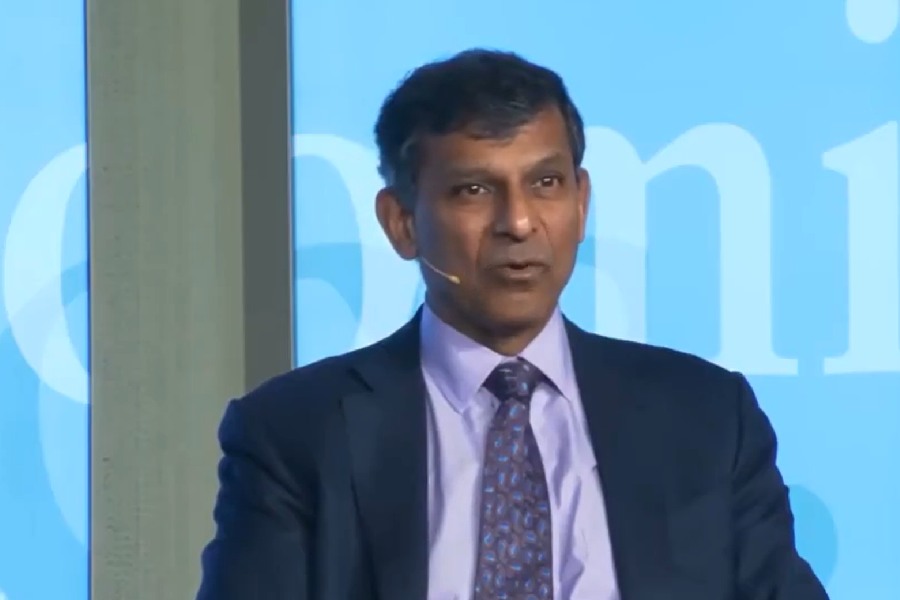India’s annual pre-budget economic survey pointing to world-beating economic growth with the fiscal headroom to buttress activity further has sent share prices shooting. “The economic activity has recovered to pre-pandemic level” and “the economy is well placed to take on challenges in 2022-23,” said the report card on the economy that is presented a day before the Union Budget which is being unveiled Tuesday.
The country’s economy is set to grow by 9.2 per cent in this financial year ending in March after shrinking 7.3 per cent when it was one of the worst-hit among the major economies by Covid-19. On the face of it, this year’s projected growth, contained in the Economic Survey released ahead of the annual budget, looks impressive,
But bear in mind, it’s a bounceback. It’s just 1.4 per cent above the pre-pandemic level of fiscal 2020 in real terms and many sectors involving personal contact such as trade, hotels, restaurants and transport will lag that figure even more. The surge of the new omicron variant also means “a threat to domestic passenger traffic,” so tourism and passenger traffic may take a while to pick up.
Casting ahead to the 2022-23 financial year is when government figures suggest the real recovery will come with the economic survey forecasting growth of 8.0-8.5 per cent. Growth will be supported by “widespread vaccine coverage, gains from supply-side reforms and easing of regulations, robust export growth, and availability of fiscal space to ramp up capital spending," the survey said added. (The government’s growth forecast for next year is actually modest, coming in lower than the nine per cent expansion forecast by the International Monetary Fund)
But there’s an important caveat to the upbeat GDP forecast: Next year’s growth “projection is based on the assumption that there will be no further debilitating pandemic-related economic disruption, monsoon will be normal, (and the) withdrawal of global liquidity by major central banks will be orderly,” the survey said. The forecast also hinges on oil prices falling and global supply chain disruptions improving.
On the back of the index, the S&P BSE Sensex climbed 1.4 per cent or 813.94 points to close at 58,014.17 while the Nifty 50 jumped 1.39 per cent 237.90 points to finish the day end at 17,339.85
For comparison to India, China’s economy grew by 8.1 per cent in 2021, after eking out 2.2 per cent expansion in pandemic-hit 2020, and it’s looking at a growth target of 5.5 per cent to 6.0 per cent for 2022 as the country grapples with omicron.
Inflation a major worry
There are some flashing amber lights. Inflation has resurfaced as a major worry. While the consumer price index remains within the central bank’s accepted range at a five-month high of 5.6 per cent — wholesale price inflation running at double-digits – it was 13.6 per cent according to the latest figures and high global energy prices could propel prices even higher. Also, recovery from supply chain disruptions caused by the pandemic will be slow and expensive. It’s important to note that the growth projections are based on an oil price forecast of $70-$75 a barrel in the next fiscal year against the current $90 price so if oil prices fail to fall to the levels forecast by the government there could be hits to both inflation and growth.
As far as public finances, the survey says the government’s “well on track” to reach its fiscal deficit target of 6.8 per cent of Gross Domestic Product for 2021-22, down 240 basis points from the 2021 level of 9.2 per cent in 2020. Before the pandemic, the government had aimed to wrestle the fiscal deficit down to 3.0 per cent of GDP in the medium-term but now its objective is to lower the deficit to 4.5 per cent of GDP by the fiscal year 2026.
Tax collections buoyant
Both indirect and direct tax collections “have been buoyant,” according to the survey. Revenue receipts have risen by a massive 67,2 per cent year on year in the eight-month period between April and November. That compares to the estimated growth of 9.6 per cent growth in the budget estimates at the start of the year. GST collections have been more than one crore every month since July 2021.
These strong numbers mean that “the Government has the fiscal capacity to maintain the support, and ramp up capital expenditure when required,” the survey says. Also, “the strong revival in revenues also provides Government with fiscal space to provide additional support as well, if necessary,” it adds.
Government debt has increased heavily since the onset of the pandemic but the Economic Survey said India's public debt portfolio is "stable and also sustainable” and exhibits “low currency and interest rate risk” thanks to “low reliance on external borrowing and issuance of the majority of securities at fixed coupon.”
Agriculture looking good
Things are looking good for agriculture, the area of the economy least hit by the pandemic, which is forecast to grow by 3.9 per cent his year after expanding by 3.6 per cent in the previous year.
The industrial sector is seen growing at nearly 12 per cent while the growth of the services sector is forecast at 8.2 per cent.
Also, the country’s capital markets have fared “exceptionally well” and have helped companies to achieve “record mobilisation of risk capital.” This has allowed India’s economic revival to be mainly funded via capital markets rather than through bank credit.
Banks flush with funds
In other encouraging news, India’s banks are well-capitalised and the overhang of non-performing assets seems to have improved.
“Almost all indicators show that the economic impact of the “second wave” in the first quarter of 2021-22 was much smaller than that experienced during the full lockdown phase in 2020-21 even though the health impact was more severe,” the survey said.
Also, India’s total exports have been another bright spot. They are expected to post 16.5 per cent growth in the 2021-22 financial year, outstripping pre-pandemic levels.











